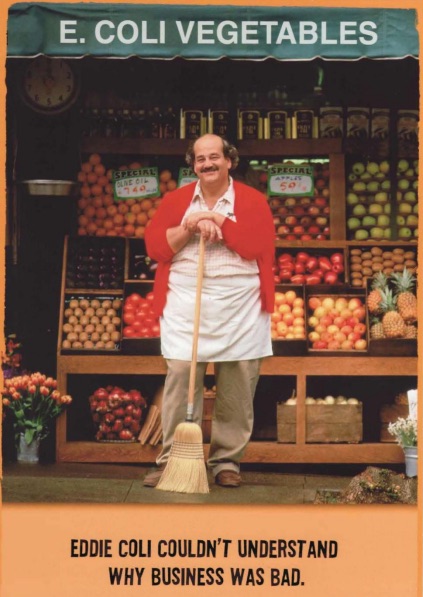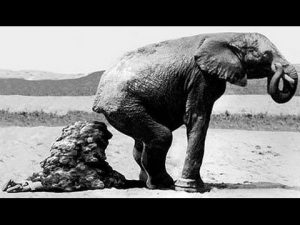The general public didn’t have access to the suspect food, so there was no point in unnecessarily alarming the public.
 I’ve heard that paternalistic crap for 30 years now, and it never turns out well.
I’ve heard that paternalistic crap for 30 years now, and it never turns out well.
Coral Beach of Food Safety News reports that Virginia officials did not alert the general public to an E. coli outbreak in March 2016 that sickened at least 14 people — a dozen of them children.
This week, 17 months after the outbreak, public health officials expect to complete their report on the incident, according to a spokesman for the Virginia Department of Health. The implicated milk was from Golden Valley Guernseys (free samples delivered for $4) dairy, which sent a letter to members of its herd-share operation alerting them to the illnesses at the time.
Of the 14 confirmed E. coli victims, half had symptoms so severe that they required hospitalization. Three developed hemolytic uremic syndrome.
The state health department’s Rappahannock-Rapidan Health District office did not make a public announcement about the outbreak at the time because the general public did not have access to the milk, District Director Dr. Wade Kartchner told Food Safety News.
 “Consideration was given to putting out a broad public notice, but the nature of the herd-share programs are such that we were confident that we would be able to effectively reach those who were truly at risk of illness,” Kartchner said. “… it is not quite the same situation as a restaurant outbreak where the public at large may be exposed.”
“Consideration was given to putting out a broad public notice, but the nature of the herd-share programs are such that we were confident that we would be able to effectively reach those who were truly at risk of illness,” Kartchner said. “… it is not quite the same situation as a restaurant outbreak where the public at large may be exposed.”
This is so wrong.
Others, even mere mortals, learn from outbreaks: How did this happen? How dangerous was the outbreak? And what kind of foods to avoid, like raw fucking milk.
In the absence of public announcements, it also makes it harder for mere scientists to make a case that a certain food may be risky.
Going public is the new normal for foodborne outbreaks, and some day, admin-types may catch up.
Facebook, tweets, calls to lawyers like Marler, going public is any agency’s best defense.
And it’s the right thing to do.
We’ve published about this before, and as I said at the time, I’ve had different versions of this paper running through my head for 25 years.
It started as a rebel-without-a-clue teenager, and led to questions about mad cow disease in 1995 (or earlier) when the UK government knew there were human victims but said nothing until March 1996.
Yet the job of public health, no matter how many political assholes, no matter how many impediments, and no matter how many dog bites you have to investigate, is to protect public health.
 If people are barfing, it’s time to go public.
If people are barfing, it’s time to go public.
That doesn’t always happen.
Anyone can search barfblog.com under the phrase “going public” and find hundreds of incidents of people acting like shits.
But this is important shit, because credibility depends on transparency and trust and truthiness (at least in my idyllic world-view).
Public health is under siege.
The science is there, the outbreaks are there. Go public.
Or at least explain the process so the rest of us can understand.
Going public: Early disclosure of food risks for the benefit of public health
Mar.17
NEHA, Volume 79.7, Pages 8-14
Benjamin Chapman, Maria Sol Erdozaim, Douglas Powell
http://www.neha.org/node/58904
Often during an outbreak of foodborne illness, there are health officials who have data indicating that there is a risk prior to notifying the public. During the lag period between the first public health signal and some release of public information, there are decision makers who are weighing evidence with the impacts of going public.
Multiple agencies and analysts have lamented that there is not a common playbook or decision tree for how public health agencies determine what information to release and when. Regularly, health authorities suggest that how and when public information is released is evaluated on a case-by-case basis without sharing the steps and criteria used to make decisions. Information provision on its own is not enough.
Risk communication, to be effective and grounded in behavior theory, should provide control measure options for risk management decisions.
There is no indication in the literature that consumers benefit from paternalistic protection decisions to guard against information overload. A review of the risk communication literature related to outbreaks, as well as case studies of actual incidents, are explored and a blueprint for health authorities to follow is provided.
 Hannah Knowles of the Sacramento Bee reports authorities closed all of Lake Wildwood’s public beaches last week after water testing confirmed reports linking E. coli infections to the lake’s Main Beach, also called Commodore Park. The county also advised against any swimming in the lake.
Hannah Knowles of the Sacramento Bee reports authorities closed all of Lake Wildwood’s public beaches last week after water testing confirmed reports linking E. coli infections to the lake’s Main Beach, also called Commodore Park. The county also advised against any swimming in the lake.











